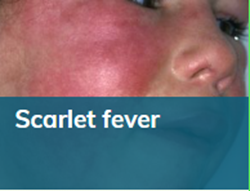Worried about Group A strep?
Worried about Group A strep? We know many families are worried about the current Group A Streptococcus (GAS) outbreak. Here’s a few facts and useful links:
Group A streptococcus (GAS) is a common bacteria which can live harmlessly in our throats and on our skin. Sometimes GAS can cause mild illnesses like sore throats, occasionally more serious illnesses like scarlet fever and rarely GAS can cause very serious disease such as sepsis, pneumonia or bone infections. Whilst serious GAS infections are still rare, there has been an increase in cases this year, particularly in children under 10 and sadly, a small number of deaths.
Remember most sore throats and coughs are caused by viruses that will get better by themselves without needing antibiotics. We want parents to know what to look out for and when to seek medical care. Use our links to check if your child has any ‘red flag symptoms’, if not they are probably safe to be cared for at home.
If your child has a
- fever,
- sore throat,
- or a rash of small, raised bumps that feels rough, like sandpaper. On white skin the rash looks pink or red. It may be harder to see on brown and black skin, but you can still feel it. This could be scarlet fever
follow the links under related topics
Related topics
Fever Sore throat Scarlet Fever Rashes Sepsis
Please seek medical attention if:
-
your child seems more unwell than usual or
-
your child is getting worse or
-
this illness is different to their normal coughs and colds
Try not to forget that strep infections are spread by close contact with an infected person and can be passed on through coughs and sneezes. So remember to:
Catch it: always cough or sneeze into a tissue
Bin it: always throw the used tissue in a bin
Kill it: always wash your hands with soap and hot water
Please consider our emergency departments are very busy from all the winter infections GAS, RSV, COVID and flu, If you feel that your child can stay at home or be seen elsewhere please do so. Please don’t go to the GP and Emergency Department unless you have red flag symptoms. If you have ‘amber flag symptoms’ contact your GP or 111. If you do not have any red or amber flags your child is safe to be cared for at home.







